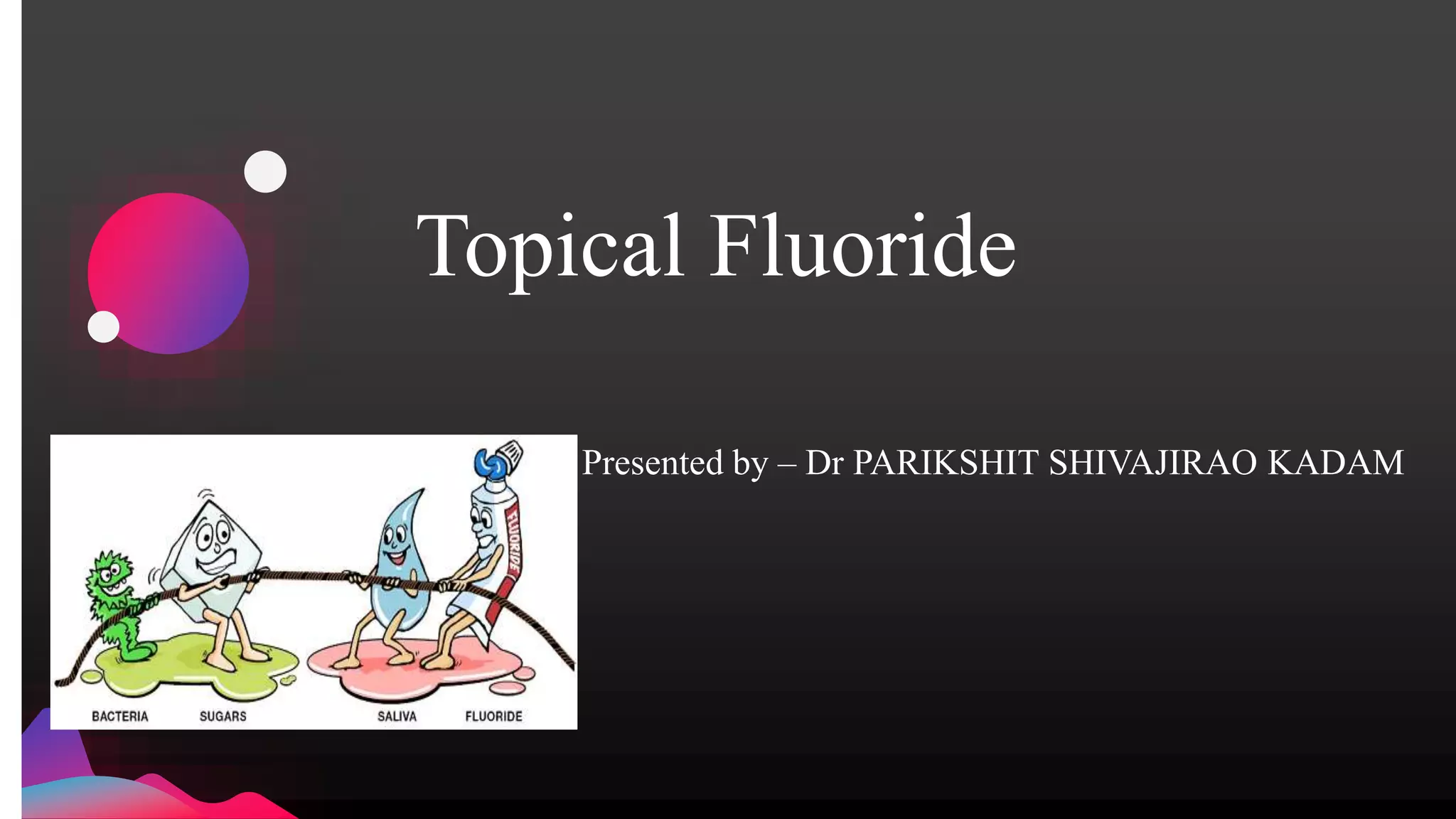The document provides a comprehensive overview of topical fluoride in dentistry, covering its history, metabolism, and mechanisms of action in caries prevention. It discusses various fluoride delivery methods, including professionally applied and self-applied options, and summarizes key clinical studies and findings on their efficacy. The document emphasizes fluoride's significant role in enhancing oral health by promoting remineralization and reducing tooth enamel demineralization.
















































































































![Bartels et al 1982 studied.......... enamel fluoride uptake at various depths from F
containing polyelectrolyte i.e. Poly-(4-vinyl pyridine).....it was observed there was
considerable deposition of 45000 ppm of F on and just below toothsurface.
Polyelectrolyte (higher molecular wt F) are superior to low molecular wt F ( NaF, APF,
SnF₂) due to following reasons –
1) Polyamine F affect essential surface properties of HA/enamel ( surface charge &
wettability) [Bartels et al 1981]
Use of fluoride containing polyelectrolytes
113](https://image.slidesharecdn.com/5-230321053430-d1cfb8a4/75/Topical-Fluorides-pptx-113-2048.jpg)
![2) Thick layer at enamel interface & prevents from being exposed [Morrissey 1977]
F content after polyelectrolyte application - 45000 ppm
F content of pure FA – 37000 ppm
3) In aqueous solution, polyelectrolyte F have low activity coefficient. Therefore initial
absorption of macromolecules on enamel surface is accompanied by adsorption of F
counter ions
114](https://image.slidesharecdn.com/5-230321053430-d1cfb8a4/75/Topical-Fluorides-pptx-114-2048.jpg)






































